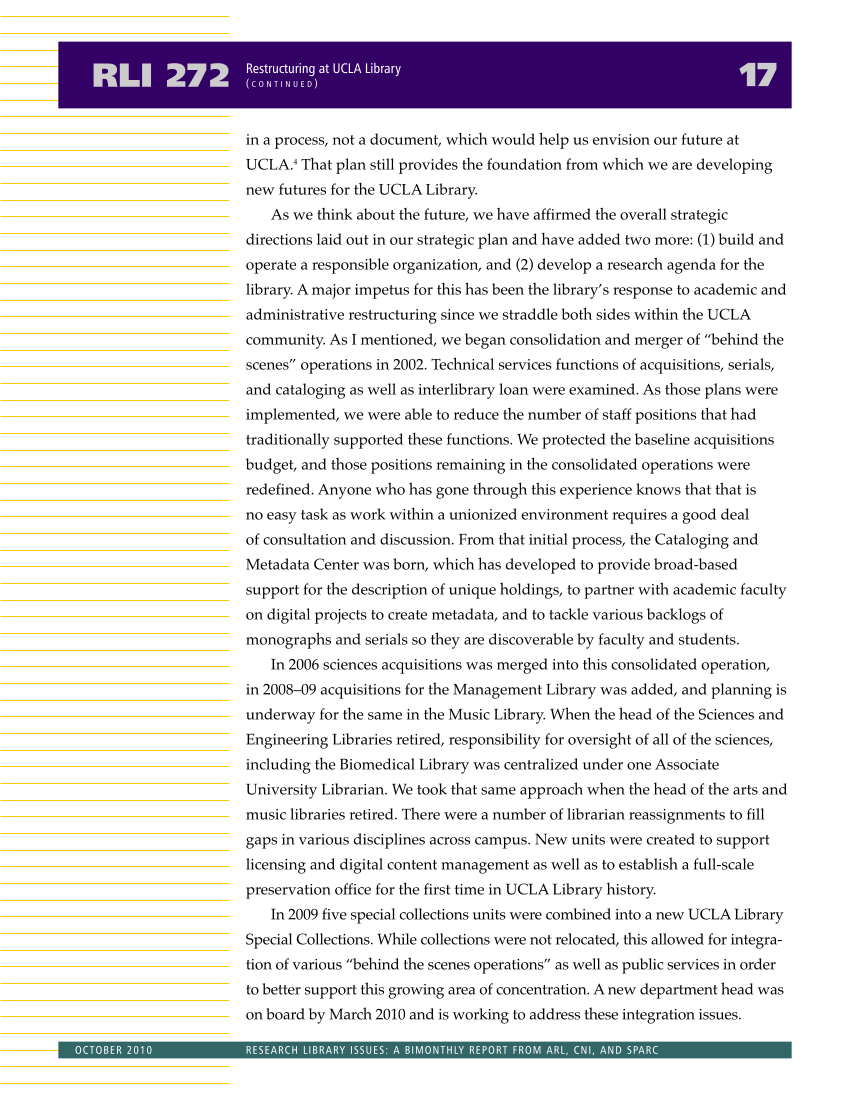in a process, not a document, which would help us envision our future at UCLA.4 That plan still provides the foundation from which we are developing new futures for the UCLA Library. As we think about the future, we have affirmed the overall strategic directions laid out in our strategic plan and have added two more: (1) build and operate a responsible organization, and (2) develop a research agenda for the library. A major impetus for this has been the library’s response to academic and administrative restructuring since we straddle both sides within the UCLA community. As I mentioned, we began consolidation and merger of “behind the scenes” operations in 2002. Technical services functions of acquisitions, serials, and cataloging as well as interlibrary loan were examined. As those plans were implemented, we were able to reduce the number of staff positions that had traditionally supported these functions. We protected the baseline acquisitions budget, and those positions remaining in the consolidated operations were redefined. Anyone who has gone through this experience knows that that is no easy task as work within a unionized environment requires a good deal of consultation and discussion. From that initial process, the Cataloging and Metadata Center was born, which has developed to provide broad-based support for the description of unique holdings, to partner with academic faculty on digital projects to create metadata, and to tackle various backlogs of monographs and serials so they are discoverable by faculty and students. In 2006 sciences acquisitions was merged into this consolidated operation, in 2008–09 acquisitions for the Management Library was added, and planning is underway for the same in the Music Library. When the head of the Sciences and Engineering Libraries retired, responsibility for oversight of all of the sciences, including the Biomedical Library was centralized under one Associate University Librarian. We took that same approach when the head of the arts and music libraries retired. There were a number of librarian reassignments to fill gaps in various disciplines across campus. New units were created to support licensing and digital content management as well as to establish a full-scale preservation office for the first time in UCLA Library history. In 2009 five special collections units were combined into a new UCLA Library Special Collections. While collections were not relocated, this allowed for integra- tion of various “behind the scenes operations” as well as public services in order to better support this growing area of concentration. A new department head was on board by March 2010 and is working to address these integration issues. RLI 272 17 Restructuring at UCLA Library ( C O N T I N U E D ) OCTOBER 2010 RESEARCH LIBRARY ISSUES: A BIMONTHLY REPORT FROM ARL, CNI, AND SPARC

































